
Last off-season I wrote that the Braves’ off-season priorities for 2019 were, in order a starting catcher, a starting outfielder, bullpen depth, a starting pitcher, and bench depth. Thanks to GM Alex Anthopoulos’s preference to spend free agent dollars on short-term deals to avoid long salary obligations and relatively little turnover, those are pretty much the same priorities for 2020, albeit with different weights, and “starting outfielder” really is “big hitter”.
First, here is a review of the 2019 Braves by WAR, along with contract status. For these purposes I am using Fangraphs RA9-based WAR calculation. Since I consider all WAR calculations a rough estimate of value, it’s perhaps best to look at the players like this in tiers, so I will do so. Note that for mid-season pick-ups I am using their full-season WAR total to better place them according to their true value.
Core Players:
RHP Mike Soroka 5.9 (under team control, pre-arbitration)
OF Ronald Acuna Jr. 5.6 (under contract)
3B Josh Donaldson 4.9 (free agent)
2B Ozzie Albies 4.6 (under contract)
1B Freddie Freeman 4.0 (under contract)
LHP Max Fried 3.3 (under team control, pre-arbitration)
RHP Julio Teheran 3.1 (team option)
LHP Dallas Keuchel 2.3 (free agent)
C Tyler Flowers 2.1 (team option)
SS Dansby Swanson 1.5 (under team control, arbitration-eligible)
Key Contributors:
RHP Mark Melancon 1.2 (under contract)
OF Matt Joyce 1.2 (free agent)
LHP Sean Newcomb 1.1 (under team control, pre-arbitration)
C Brian McCann 1.1 (free agent, retiring)
OF Ender Inciarte 1.1 (under contract)
RHP Chris Martin 1.0 (free agent)
RHP Shane Greene 0.9 (under team control, arbitration-eligible)
SS Adeiny Hechavarria 0.9 (free agent)
RHP Mike Foltynewicz 0.8 (under team control, arbitration-eligible)
RHP Luke Jackson 0.8 (under team control, arbitration-eligible)
RHP Jacob Webb 0.8 (under team control, pre-arbitration)
RHP Josh Tomlin 0.8 (free agent)
OF Adam Duvall 0.7 (under team control, arbitration-eligible)
OF Nick Markakis 0.4 (team option)
Roll Players:
RHP Anthony Swarzak 0.3 (free agent)
UT Charlie Culberson 0.3 (under team control, arbitration-eligible)
LHP Jerry Blevins 0.3 (free agent)
OF/3B Austin Riley 0.2 (under team control, pre-arbitration)
RHP Jeremy Walker 0.2 (under team control, pre-arbitration)
RHP Darren O’Day 0.2 (free agent)
C Francisco Cervelli 0.1 (free agent)
LHP Grant Dayton 0.1 (under team control, arbitration-eligible)
OF Billy Hamilton 0.1 (team option)
C John Ryan Murphy 0.0 (under team control, arbitration-eligible)
OF Rafael Ortega -0.1 (under team control, pre-arbitration)
UT Johan Camargo -0.5 (under team control, arbitration-eligible)
Also on the 40-man roster with no or minimal value in 2019, under team and control and pre-arbitration: RHPs Chad Sobotka, Touki Toussaint, Patrick Weigel, Bryse Wilson, Kyle Wright, and Huascar Ynoa.
As of right now, the only thing we know for sure is that the Braves will need to replace retiring catcher Brian McCann and that they will need to either re-sign Josh Donaldson or sign another hitter to provide equivalent projected value.
As for the team options, for the purposes of this piece I will be assuming that the Braves will pick up the team options on Tyler Flowers, Julio Teheran, and Nick Markakis and declining the option on Billy Hamilton. I will also assume that the Braves will tender contracts to all of their arbitration-eligible players with the exception of John Ryan Murphy. In 2019 the Braves started the season with a player payroll of around $128 million; they ended up at $138 million after tacking on Keuchel, Melancon, Greene, Martin, and Hamilton, but also getting relieved of the salary obligation of Kevin Gausman. GM Alex Anthopoulos indicated that the Opening Day payroll had built-in room for mid-season acquisitions, but also that the final payroll did go over budget. The team will not tell anyone what the budget actually will be, and it’s likely the Braves won’t spend up to the budget this offseason in order to once again have room for mid-season acquisitions.
With players under contract, the three player options exercised above, and using the typically accurate arbitration projections proved by MLB Trade Rumors, the Braves will start the offseason with approximately $102.25 million in payroll obligations. Assuming the 2019 budget was actually somewhere around $133 million (splitting the difference between the Opening Day payroll and the final day payroll) and taking Braves CEO Terry McQuirk’s word that the payroll will receive a modest increase, I would estimate the payroll budget to be set around $137 million, with the front office looking to hold back around $8 million for mid-season acquisitions. That would give the Braves roughly $26.75 million this offseason to replace the 13.2 WAR that will be free agents. Doing so should put the Braves back in the 90+ win category, giving them another good chance to win the NL East and take another shot at postseason success.
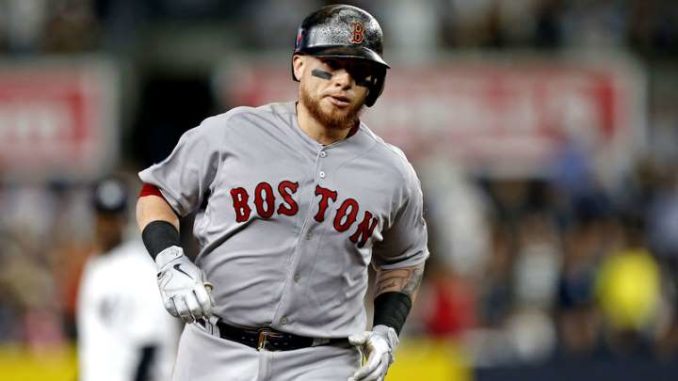
Priority 1: Starting Catcher
You have to have a catcher because if you don’t you’re likely to have a lot of passed balls.
-Casey Stengel
In 2019 the Braves once again utilized a fairly even 50/50 playing time split between two veteran catchers, a system that has worked well the last three seasons with Atlanta placing in the top 10 in value at the position each year. The constant in all three years has been Tyler Flowers (now a new Dad for the 5th time), who while having his struggles mid-season at the plate and uncharacteristically with passed balls, still is one of the best pitch-framers in baseball, stealing a score of strikes for his pitchers. It’s unlikely the Braves will want to begin the off-season with no veteran catchers under contract, so the team picking up Flowers’s option is one of the safer bets. Here’s some options the team could explore to pair up with Flowers.
In-House Option: Alex Jackson
Alex Jackson is a former first-round draft pick acquired in a trade with Seattle before the 2017 season. An outfielder in the Mariners system, the Braves quickly converted Jackson back to his high-school position of catcher. Possessing tremendous power potential, the early thought on Jackson would be that he would present a strong bat-first catching option who could transition back to the outfield if his defensive work behind the plate didn’t pan out.
The good news is that not only has Jackson improved behind the dish, but he should now be considered a well-above average overall defensive catcher, with Baseball Prospectus rating him as the top defensive catcher in all of AAA last season.
The bad news is that while that tremendous power did propel Jackson to a career high 28 home runs for the Stripers in 2019, it came with a 34.2% strike-out rate and a meager 5.8% walk rate. Major league pitchers will likely be able to pick apart the numerous holes in Jackson’s swing for awhile until he is either able to adjust or simply settle into a roll of a defensive back-up who can occasionally run into a homer. This latter profile would work best as a true back-up to an established starting catcher, not as someone to split time on a 50/50 share.
The Braves also have two strong catching prospects working their way up through the minors in William Contreras and 2019 9th-overall draft pick Shea Langeliers. One or both could be the future of the position, but neither should be counted on for 2020, though Contreras will likely be added to the 40-man roster and could be a call-up late in the year.
Big Money Option: Yasmani Grandal
For the second season in a row, Yasmani Grandal will hit the free agent market as the best available catcher. Unlike in 2019, he will not have a qualifying offer weighing down his market or teams distracted by fellow All-Star J.T. Realmuto available on the trade market. Grandal took a Josh Donaldson-esque one-year deal with the Brewers for a $16 million base salary. The contract has a 2020 mutual option that Grandal will almost certainly turn down to go back into free agency. A five-year deal in the $82-85 million range similar to what Brian McCann and Russell Martin negotiated in their 30s would seem to be justified given that Grandal put in arguably his finest season to date in 2019.
At an average annual salary of ~$17 million, the Braves could add Grandal as their top off-season acquisition and slide him into the clean-up spot as a switch-hitter between Freeman and whomever ends up batting 5th, but it seems unlikely for a number of reasons. While it’s a different regime than in 2014, the Braves weren’t inclined to give this kind of contract to a 30-year-old catcher back then, and the team had a lot more of a track record with Brian McCann. It’s simply a big risk to take with any catcher given the stress of the position, doubly so when you are anticipating that player to also be your clean-up hitter. Grandal would also likely make Flowers into overpriced back-up, through the Braves could then trade Flowers and utilize Jackson as a true (and cheap) back-up option.
In the end, I seriously doubt that the Atlanta Braves would end up being the high-bidder on the hands-down best free agent catcher of the offseason, given other places to spend their budget.
Budget Option: Jason Castro
The Braves were reportedly a strong bidder for in the 2016 off-season for Jason Castro before he signed a three-year deal with the Minnesota Twins. Relegated to a back-up role by the emergence of Mitch Garver, Castro is still a strong defender and left-handed hitter, qualities that could make him an eerily similar replacement for the retired McCann. While not a strong offensive force overall, he’s above average for a major league catcher today, and his 13 home runs in 2019 was his highest total in five seasons despite only receiving 275 plate appearances.
Castro, along with Russell Martin, Alex Avilia, and recent Atlanta late-season pick-up Francisco Cervelli are veterans well into their 30s with strong defensive credentials that could likely be had on short-term deals in the $4-6 million per year range. If the Braves have a “type”, it’s this.
Trade Option: Christian Vazquez
The Boston Red Sox had a disappointing season coming off a World Series championship. It’s understandable having the highest payroll in the game when you are winning, not so much when you’re missing the playoffs, and the front office has already made it clear that their offseason Job One will be to clear off payroll. Christian Vazquez isn’t making crazy money — a $4.2 million commitment for 2020 and then $6.25 million for 2021 — but it may be enough for the Red Sox to explore moving one of the top defensive catchers in the American League who is coming off a career-best season at the plate while the 29-year-old’s value is at its peak.
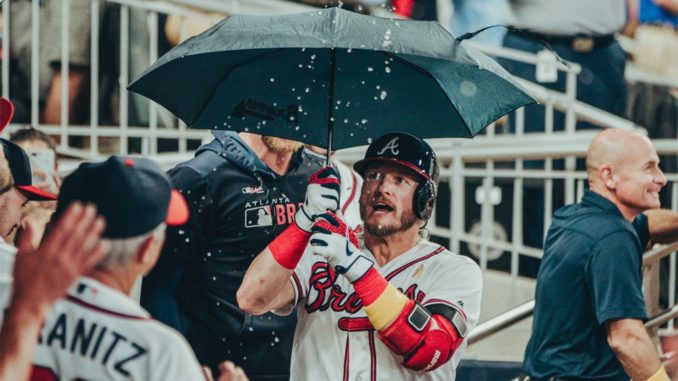
Priority 2: Big Hitter
You know I used to hate Parkman when he was with the A’s It’s funny how a new uniform can change your attitude about a guy.
– Harry Doyle, Major League II
In last year’s piece, I listed a half-dozen outfield options for the Braves to consider, but I acknowledged that the Braves would like go in a completely different direction. I was right in that they would go in a different direction, instead picking up third baseman Josh Donaldson on the largest one-year deal in major league history and re-signing Nick Markakis for a relative pittance to fill an outfield spot.
Donaldson seemed to fit right in with the Braves clubhouse, and there’s a strong possibility the Braves fill this spot simply by re-signing the slugger. That said, going into his age-34 season, this is likely his last opportunity for a long-term contract, and after the season he had he would deserve it. The question will be is the Atlanta Braves the team that will give him what he wants?
In-House Option: Austin Riley
At some point, I fully expect Austin Riley to establish himself as a regular major league hitter and middle-of-the-order regular, and he is an above average defense option at third base and has shown he can hold his own in the outfield. He just came off a rookie season in which he hit 30 extra base hits, including 18 HR, in less than 300 plate appearances. He forced himself to the majors after blistering AAA for 6 weeks in which he hit .299/.377/.681 for Gwinnett.
Of course, the elephant in the room is that almost all of Riley’s major league production came within a 14-game span at the start of his big league career. As teams saw more of Riley, they realized that by selling out for enough bat speed to hit fastballs, he was vulnerable to sliders away, and from May 31 until a knee injury forced him to the IL in early August, Riley was only hitting .200/.260/.417 and piling up strikeouts. He looked even worse when he came back in September, and he ended up being left off the playoff roster.
If Riley had been able to rally late in the season, it would be reasonable for the Braves to look at spending their payroll elsewhere, but it seems unlikely that the Braves will count on Riley to start 2020. Also of note is that Johan Camargo, 2018’s starting third baseman, is also on the roster. It would be possible, if unlikely, that they could open the third base spot to competition between the two young veterans.
Big Money Option: Josh Donaldson
The easiest solution here may be to simply re-sign incumbent third baseman Josh Donaldson. Donaldson blended easily into the Braves clubhouse and there seems like there should be a mutual interest in getting something done.
That said, at 34 years old, this season may represent the last shot for Donaldson to get a high-dollar, multi-year deal, something the Braves have never been keen to give to players over 30, and doubly so in the brief Alex Anthopoulos era. Donaldson may be the exception; after and injury plagued 2018, Donaldson played 155 games for Atlanta and showed strong athleticism. I suspect that most of the Braves payroll room will go to retaining Donaldson.
The other big money option here is Washington third baseman Anthony Rendon, who will be the most sought after position player in free agency this off-season. Rendon would certainly be a fantastic alternative to Donaldson if negotiations break down, but it seems likely that there would be more competition for him.
Budget Option: Todd Frazier
The Mets third baseman had a strong 2019 season, hitting .251/.329/.443 and providing league-average defense at third base. His 21 home runs would have placed him fourth on the Braves. Like Donaldson, Todd Frazier is going into his age 34 season and with Donaldson and Rendon likely to command the most free agent attention, it’s possible Frazier would be willing to take a relatively high-value one-year deal after signing a two-year contract that only averaged $9 million per season to play for his hometown Mets.
A one-year deal for Frazier would allow the Braves to pivot their attention to other areas of the team while still securing a credible middle-of-the-order hitter while leaving a path open for Austin Riley to take control of third if he is able.
Trade Option: DJ LeMahieu
The Braves and the Yankees haven’t hooked up on a significant trade in some time, but it may make sense for New York to look for suitors for DJ LeMahieu coming off a career offesnive year after leaving Colorado as a free agent. With an early-season injury to 2018 Rookie of the year Miguel Andujar, LeMahieu primarily played third base for the Yankees and acquitted himself well, posting a 5.4 fWAR season that even bested Donaldson’s. At a salary of only $12 million for 2020 heading into free agency again, the 31-year-old would be a perfect fit for Atlanta. He even has positional versatility, with experience at first and second base as well. As for New York, they still have Gio Urshela and Andujar to battle it out for third base and Gleyber Torres to man either second base or shortstop.
Unlikely? Absolutely, especially since if Didi Gregorius leaves via free agency, LeMahieu could play second with Torres moving to shortstop. But I think it’s just as possible, or more so, as the Kris Bryant or Justin Turner speculation that has floated around the last couple of weeks.
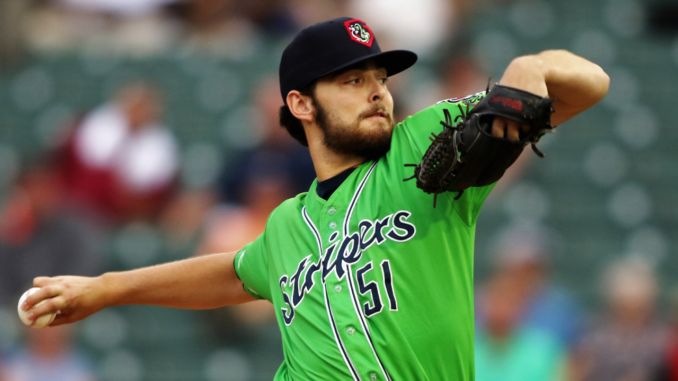
Priority 3: Starting Pitcher
I don’t know why you would trade a stud pitcher.
– Anna Benson
The state of the Braves starting rotation in 2020 already appears to be stronger than going into 2019. Right-hander Mike Soroka has begun his career in earnest after an abbreviated 2019 campaign, establishing himself as a top-of-the-rotation starter. Lefty Max Fried also showed out to be a worthy 2/3 starter with more potentially in the tank, right-hander Mike Foltynewicz salvaged a horrific start of the season with a strong finish, and the Braves seem likely to exercise the option of Julio Teheran, who at 28 years old put together his strongest season in four years.
That said, the World Series this is dominated with top-shelf starting pitchers, reversing a trend which saw relievers be the key contributors to post-season success. If the Braves do not spend on big signing for the offense, they may elect to grab one of the top pitchers on the market.
In-House Option: The Gwinnett Stripers
The AAA Stripers ended their season with rotation that should make many rebuilding major league clubs sick with envy. Ian Anderson, Touki Toussinant, Bryce Wilson, and Kyle Wright either are or have recently been in most Top 100 prospect lists, and all but Anderson have at least tasted the major leagues. Add to them other highly regarded prospects like Huascar Ynoa, Patrick Weigel, and Phil Pfeifer, all of whom also got bullpen experience last year, and you have a slew of pitchers who would be candidates to land in any major league rotation. Then on top of that there’s Kyle Muller, Jasseel De La Cruz, and Nolan Kingham… pitchers who all had success at the AA level in 2019 and could be in line for a big move up. This doesn’t even include lefty Sean Newcomb, who started 2019 in the rotation; the team has indicated that he would be given the opportunity to re-claim his spot
The Braves could opt to let these guys battle it out in spring training to see who gets the first shot at being 2020’s Mike Soroka. Others will work out of the bullpen, others will provide depth in AAA, and it seems very probable that some will be traded to fill other needs.
Big Money Option: Gerrit Cole
Or if you prefer, Stephen Strasburg if he should decline his player option, but to keep is simple, let’s focus on Cole. Gerrit Cole should be among the top vote-getters for the Cy Young Award again after helping pitch the Houston Astros back to the playoffs and leading the AL in ERA (2.50). He’s the most accomplished pitcher to make it to the open market since David Price and Zach Greinke were free agents in after the 2015 season. Price signed a 7-year/$217 million deal at age 30, Greinke landed a 6-year/$206 million contract. Cole will be 29 years old, so it’s not unreasonable for him to look for something in the Price deal range, plus a little more. That’s going to be around a $32 million per year value.
Would the Braves be the high bidder here? It seems unlikely. Unless the contract was heavily back-loaded or otherwise had deferred money attached, it would eat up all of Atlanta’s budget plus another $6 million on top of that. The Braves could make up the difference by trading salary, with Julio Teheran’s $12 million 2020 number the most likely to go. (Note: while I believe the Braves will pick up Teheran’s option since he does have value, that doesn’t preclude the Braves trading him this offseason under the right circumstances.) The Braves under multiple GMs have been reluctant to give pitchers long-term contracts in any event, much less potentially record-breaking ones.
Budget Option: Wade Miley
Gerrit Cole isn’t the only Houston starting pitcher to hit the market. After an injury-plagued 2018, left-hander Wade Miley signed a $4.5 million 1-year make-good contract with the Astros, and he rewarded them with a solid 3.98 ERA in 33 starts in the American League. Miley also posted a 49.7% groundball rate, a number that should pique the interest of the Atlanta front office. Going into his age 33 season and with a lot of other options on the market, Miley could be a pick up on a 2-year deal.
Another option here would be lefty Dallas Keuchel, who like Josh Donaldson seemed to easily make himself at home in the Braves clubhouse. A full year younger than Miley and with similar groundball tendencies, Keuchel still makes as much sense for the Braves this offseason as he did when they signed him in June. The question is what contract length Keuchel would be looking for. With both a Miley or a Keuchel signing, I would again expect another move, such as a Teheran or even a Mike Foltynewicz trade.
Trade Option: Chris Archer
Atlanta was reportedly in the mix to acquire Chris Archer from Tampa Bay at the 2018 trade deadline, but the Pittsburgh Pirates made an unexpectedly aggressive offer to pick him up. The move didn’t work for the Pirates in 2018 and 2019 was a disaster for the team, leading the the ouster of the team president, general manager, and manager. Whomever ends up leading the Pirates may want to make a clean break, especially after Archer posted a 5.19 ERA and only managed 23 starts due to injury while two of the three prospects traded to Tampa Bay in 2018 played key roles in the team’s playoff run this year.
Archer would represent a buy-low option for Atlanta, but with potential upside. When healthy, Archer has one of the better four-seam/slider combos in the league. The question then becomes how healthy he is, and how motivated Pittsburgh may be to move him. Given the absolute dumpster fire that was the Pirates clubhouse in 2019, it wouldn’t be surprising if anyone would see an uptick moving to another team.
Priority 4: Bullpen
The two most important things in life are good friends and a strong bullpen.
– Bob Lemon
I’m not going to go too deep into all of the possibilities for acquiring bullpen help, but the Braves enter this offseason in considerably better shape than last season. Trade deadline acquisitions Mark Melancon and Shane Greene already give Atlanta two healthy veteran back-of-the-bullpen options that they didn’t have last year. Righty Luke Jackson has emerged as a quality set-up arm, and Jacob Webb was second-most productive Braves rookie pitcher this year before going on the shelf in the July. Sean Newcomb also found a home in the bullpen and posted a 3:1 strikeout to walk ration as a reliever.
After that however, and the Braves have a lot more options than they have certainty. It’s certainly possible that former up-and-comers like A.J. Minter or Chad Sobotka could pull it back together after taking a step back in 2019. It’s also possible that pitchers that had strong 2019 minor league campaigns like Jeremy Walker, Patrick Weigel, Huascar Ynoa, or Phil Pfeifer could take that next step and play an important role in 2020.
I doubt the Braves will put it all on the young guys however. The Braves won’t be in the market for a closer, and I doubt the team will want to outlay significant payroll to the bullpen after picking up Melancon and Greene, both of whom come attached to significant salary. I do expect the Braves to make a move or two late however, as they did in 2019 when they acquired Josh Tomin in spring training and Jeremy Blevins and Anthony Swarzak early in the season. Who that could be is almost impossible to guess at this point, especially considering non-tender and waiver wire options.
Priority 5: Bench
Come on, Hobbs! You’re up!
-Pop Fischer, The Natural
One of the differences between the 2018 and 2019 Braves was the depth of the bench. Most of that bench is slated to return for 2020 in the form of Johan Camargo, Charlie Culberson, and Adam Duvall. However, all three of these players are arbitration-eligible and the Braves have never been a team that wanted to spend big on the bench, even in the 90s. While all three will likely be tendered contracts, I would not be surprised if any of them are included as part of a deal.
Like the bullpen, it is almost impossible to guess at the players that could become available for Atlanta over the course of the off-season and spring training. Matt Joyce, like Josh Tomlin, was a late spring acquisition that played a big role in 2020. Look for the Braves to make late moves to bolster this unit again. The 25-man roster expanding to 26 men in 2020 will make the bench an intriguing subplot this offseason, and the team may be more willing to try straight platoons or carrying a third catcher like Alex Jackson as an offensive weapon off the bench.

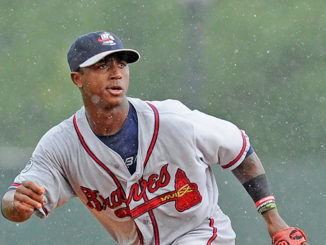
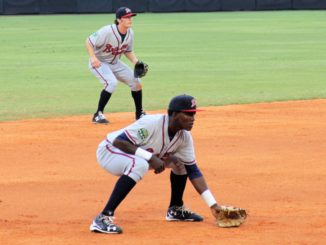
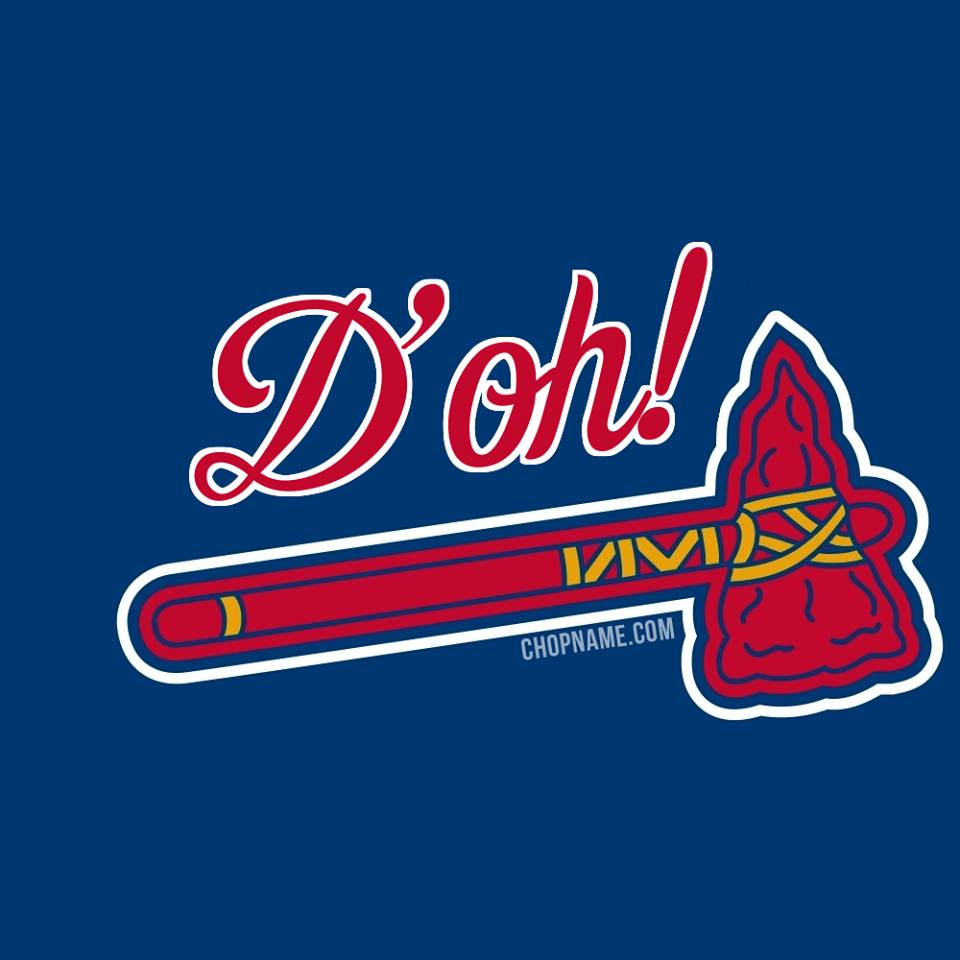
Quit Teheran and Keuchel, use their money to sign Cole.
Attach a minor leaguer to Melancon and trade him. Use his money to sign arbitration players.
Sign Donaldson.
Sign Cervelli, quit Flowers. Bring up Jackson or sign defensive catcher.
Exercise Markakis, sing Hechevarria as insurance for Culberson. Sign O’day, Blevins, Joyce.
Move Newcomb to rotation or bring up Wright or sign cheap starter.
Bring up Anderson to help in bullpen this year and get a little experience.
About same salary from last year.